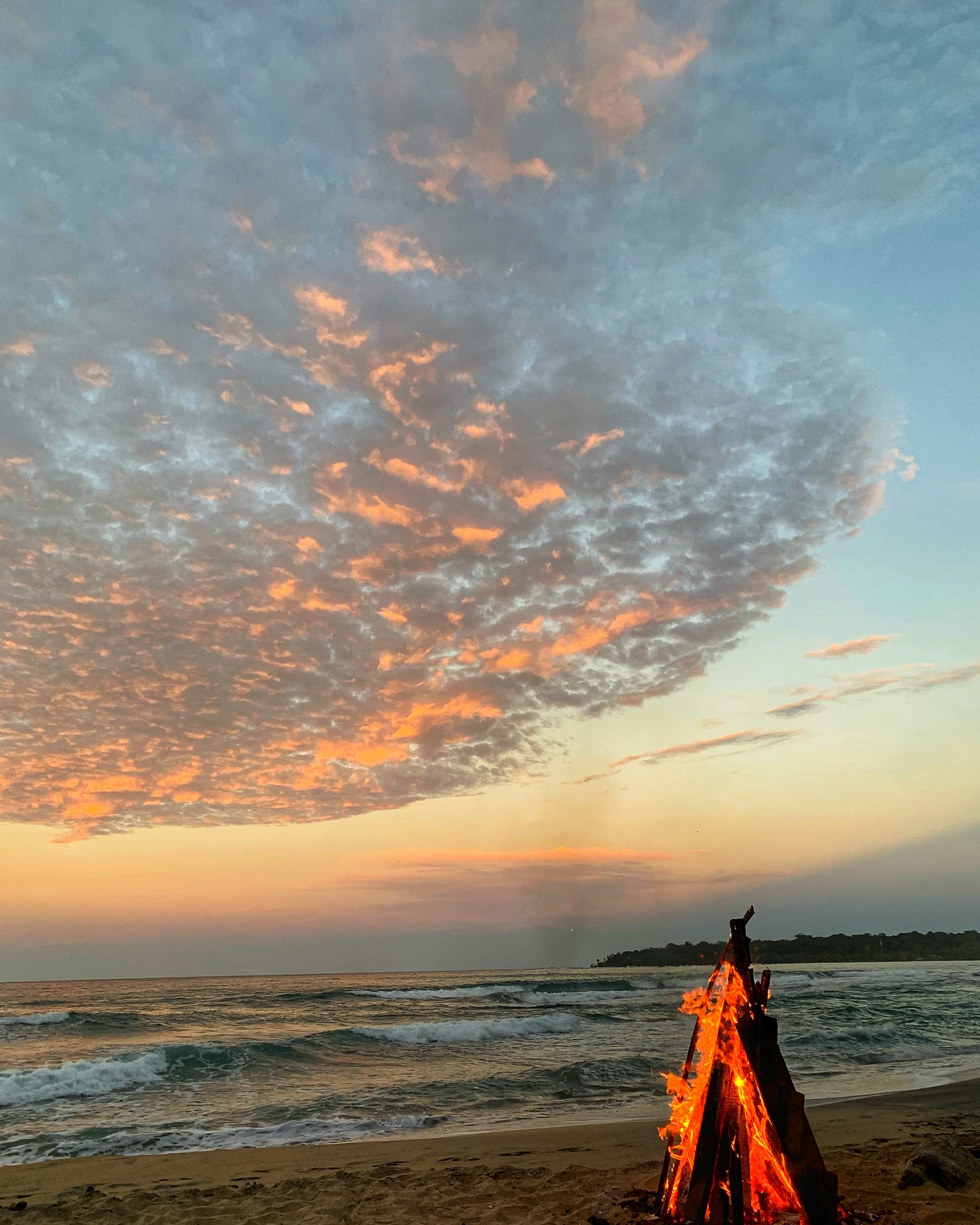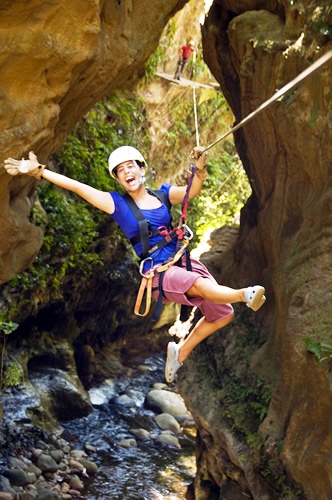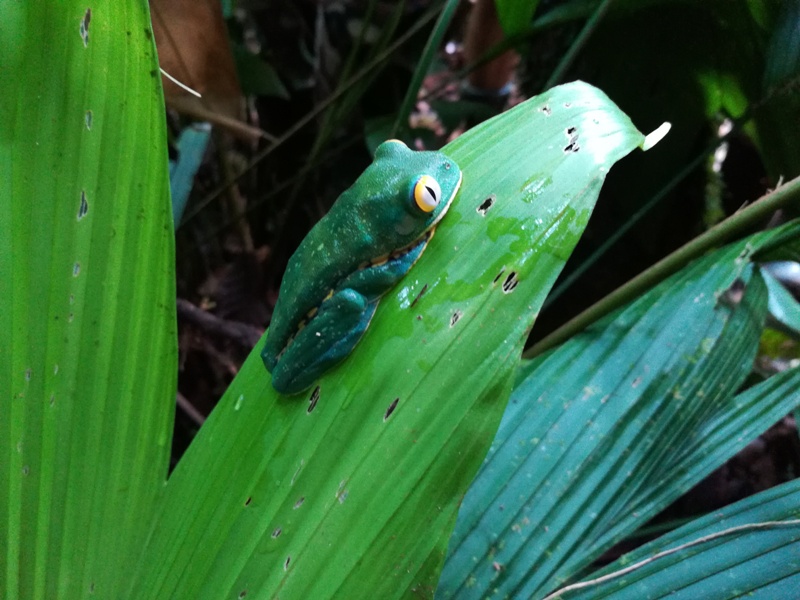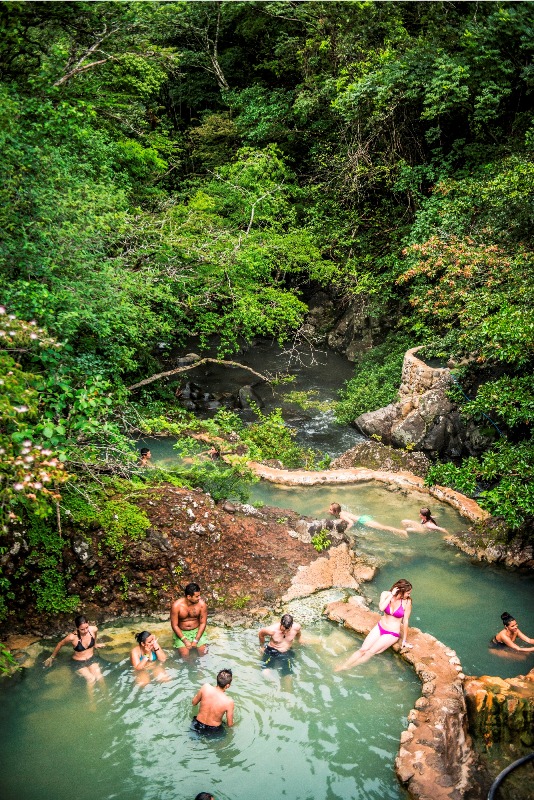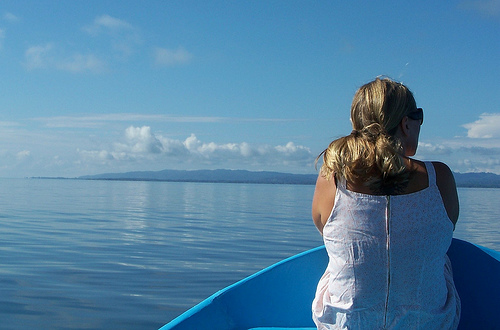 From the concrete jungle of Johannesburg, South Africa, to the wilds of the Costa Rican rainforest is quite a change. Two months ago, South African couple Gary Kritzinger and Shayne Mrazek left behind electric fences and heavy security, hour-long 6 km commutes, and a metropolitan beehive of 12 million people, for a different kind of jungle where their closest neighbors are tree frogs and toucans.
From the concrete jungle of Johannesburg, South Africa, to the wilds of the Costa Rican rainforest is quite a change. Two months ago, South African couple Gary Kritzinger and Shayne Mrazek left behind electric fences and heavy security, hour-long 6 km commutes, and a metropolitan beehive of 12 million people, for a different kind of jungle where their closest neighbors are tree frogs and toucans.
“We just wanted to get out of the rat race and be closer to nature,” Kritzinger said.
The couple’s dream started last November when Kritzinger visited Costa Rica for a philanthropic vacation. He fell in love with the profusion of nature, and the couple returned early this year to seek their new paradise. After combing the Pacific Coast, they found home at the sustainable eco-community of Portasol Rainforest & Oceanview Living, on Costa Rica’s Central Pacific Coast between Manuel Antonio and Dominical.
“We thought, ‘this is something really special,’” commented Kritzinger about first visiting Portasol. “I like the fact that it is not in the hustle and bustle. It’s secure; it’s well looked after, has good infrastructure, and we love the strong conservation ethic. This place is paradise and we couldn’t believe that you can buy land in such an amazing place at such a steal of a price!”
Kritzinger and Mrazek bought four acres with ocean views, giant trees, and a river and two streams running through it. “It’s like what I would imagine the Garden of Eden to be. It is lush and beautiful, and very private and secluded,” Kritzinger mused. The couple plans to build a holiday rental, and is leasing one of Portasol’s luxury vacation homes in the meantime.
 With their two dogs and two cats – a third local feline has since joined the family – Mrazek and Kritzinger began living at Portasol in September. They’ve jumped into rainforest living completely, starting their own “rescue project” for the red-eyed tree frog (Agalychnis callidryas) at Portasol. Upon moving in to Casa Monos Locos vacation home, they noticed clutches of eggs being deposited on the outer house wall. Being wildlife lovers and very inquisitive, they found a bright green red-eyed tree frog on another nearby wall, put two and two together and started saving the eggs.
With their two dogs and two cats – a third local feline has since joined the family – Mrazek and Kritzinger began living at Portasol in September. They’ve jumped into rainforest living completely, starting their own “rescue project” for the red-eyed tree frog (Agalychnis callidryas) at Portasol. Upon moving in to Casa Monos Locos vacation home, they noticed clutches of eggs being deposited on the outer house wall. Being wildlife lovers and very inquisitive, they found a bright green red-eyed tree frog on another nearby wall, put two and two together and started saving the eggs.
“How it works in nature is the frogs will go near a stream or pond and lay their eggs on a leaf above it; then the hatching tadpoles will drop in the water to swim and turn into frogs,” explained Mrazek, who researched the frogs on the internet with Kritzinger. “The swimming pool by the house wall was confusing the frogs. We thought it was better to save the eggs rather than let them die in a chlorinated pool.”
 The couple set up large plastic tubs of water on their terrace dining table and separated the frogs by age – eggs, tadpoles, advanced tadpoles and froglets. At present, they have saved close to 600 eggs, and have already released 25 fully-developed frogs back into the rainforest at Portasol. See the video on Facebook.
The couple set up large plastic tubs of water on their terrace dining table and separated the frogs by age – eggs, tadpoles, advanced tadpoles and froglets. At present, they have saved close to 600 eggs, and have already released 25 fully-developed frogs back into the rainforest at Portasol. See the video on Facebook.
“We are very proud and thankful to have Gary and Shayne be part of Portasol’s sustainable community. I am sure Mother Nature will be eternally grateful for their efforts to help preserve our Planet Earth,” commented Portasol owner Guillermo Piedra.
Besides red-eyed tree frogs, another pet project of Kritzinger is to start “snake safari tours” at Portasol. “We’re wildlife fanatics, and I am especially into snakes,” he explained. He and Mrazek kept 18 snakes as pets in South Africa, and both are certified there for venomous snake handling and snake removal from houses. The couple hopes to lead tours at Portasol in the future for people to safely discover snakes and other wildlife. With Portasol’s 1,300-acre rainforest development along the Portalón River Valley and 200-acre private reserve, there is plenty to see.
Article by Shannon Farley











